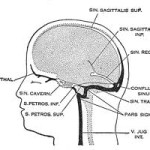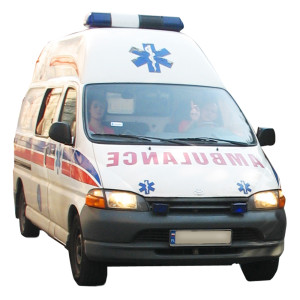I received an email that asked several questions regarding events leading up to a cardiac arrest and then how to manage feelings of failure after CPR is given but the person still remains dead. I hope this helps.
Tag Archives: 911
How Do I Survive Severe Bleeding At Home Alone?
In this 3rd and final video on the series “Emergencies When You’re Alone” we cover what to do if you are severely cut and are all alone. If you’ve ever wondered the best action to take to survive, you will want to watch this video.
What Is Cerebral Venous Sinus Thrombosis?
Hello Rescuers!
I received an email from a RoyOnRescue friend who had suffered a head injury while playing a sport. After being seen by the doctor he was diagnosed with Cerebral Venous Sinus Thrombosis or (CVST). He had asked me if I would give my explanation of what it is and if it was something he should be worried about. His doctor had ex plained it but he was still a bit foggy regarding the diagnosis. Well, after looking into it from the clinical perspective, I realized that it was a pretty big deal and in some cases may be fatal. I researched multiple sources to gather credible information and when it all came down to brass tacks, I found that the Wikipedia explanation had done a pretty dog-gone good job of summarizing CSVT. So, with all credit given to them for most of this article and a link back to their website, here it is.
plained it but he was still a bit foggy regarding the diagnosis. Well, after looking into it from the clinical perspective, I realized that it was a pretty big deal and in some cases may be fatal. I researched multiple sources to gather credible information and when it all came down to brass tacks, I found that the Wikipedia explanation had done a pretty dog-gone good job of summarizing CSVT. So, with all credit given to them for most of this article and a link back to their website, here it is.
I have personally responded and treated many different types of head injuries as a paramedic but had not researched this problem to this level. Then, shortly after receiving this question, I read that Secretary of State, Hillary Clinton was diagnosed and hospitalized with the very same problem secondary to her head injury! Ironic. So, I thought to myself, if two people experienced this problem secondary to a common traumatic head injury(concussion), there may be more with the same question.
Here’s my trimmed-down version of what it is, what it’s symptoms are, how to determine if it is truly CSVT and then what a person may want to do if they think they may be suffering from such a complication. So let’s dig into some of the questions you may have! P.S. You’ll notice there are more links then usual in this article. The topic is so complex and has so many different facets I thought it wise to allow you to do some of your own information mining and hope the links make it easier.
Q: What is a cerebral venous sinus thrombosis anyway?
A: A CVST is the presence of thrombosis (a blood clot) in the dural venous sinuses, which drain blood from the brain.
Q: What causes a CVST?
A: There can be many causes of CVST. Here is a few I included:
- Thrombophilia, a tendency to develop blood clots due to abnormalities in coagulation, e.g. factor V Leiden, deficiency of protein C, protein S or antithrombin, or related problems
- Nephrotic syndrome, a kidney problem causing protein loss in the urine
- Chronic inflammatory diseases, such as inflammatory bowel disease, lupus and Behçet’s disease
- Pregnancy and puerperium (the period after giving birth)
- Particular blood disorders, especially polycythemia vera and paroxysmal nocturnal hemoglobinuria
- Use of estrogen-containing forms of hormonal contraception
- Meningitis and infections of the ear, nose and throat area such as mastoiditis and sinusitis
- Direct injury to the venous sinuses
- Medical procedures in the head and neck area
- Sickle cell anemia
- Dehydration, primarily in infants and children
- Homocystinuria
Q: How might I know if I have a CVST?
A: Headache that may worsen over the period of several days, but may also develop suddenly. Strangely the headache may be the only symptom of cerebral venous sinus thrombosis. Stroke, 40% of all patients have seizures, Common symptoms in the elderly with this condition are otherwise unexplained changes in mental status and a depressed level of consciousness. The pressure around the brain may rise, causing papilledema (swelling of the optic disc) which may be experienced as visual problems. In severely raised intracranial pressure, the level of consciousness is decreased, the blood pressure rises, the heart rate falls. This is a common symptom found in closed head injuries which makes sense as the mechanism is very similar.
Q: How will the doctor know if this is what I have?
A: The most commonly used tests are computed tomography (CT) and magnetic resonance imaging (MRI), both using various types of radiocontrast to perform a venogram and visualise the veins around the brain
Q: How is a CVST treated and cured?
A: Treatment is with anticoagulants (medication that suppresses blood clotting), and rarely thrombolysis (enzymatic destruction of the blood clot). Given that there is usually an underlying cause for the disease, tests may be performed to look for these. The disease may be complicated by raised intracranial pressure, which may warrant surgical intervention such as the placement of a shunt.
A: Yes. Like any illness or injury that causes a problem with the circulation of oxygenated blood to our tissues, this type of problem can be very dangerous if left untreated. It also runs a risk of complication in that it raises the intracranial pressures which can act similar to a closed head injury and this too can cause severe injury or death. If a person has any of the symptoms listed above, they should be seen as soon as possible to rule out this potentially life threatening disorder. If a person is reacting with decreased level of consciousness, or any type of life threatening complications, activation of Emergency Medical Services or 911 should be immediate with life saving or time buying intervention given.
I hope this helps and keep well!
See Source:
http://en.wikipedia.org/wiki/Cerebral_venous_sinus_thrombosis
http://neurology.jwatch.org/cgi/content/full/2007/515/2
http://www.medscape.com/viewarticle/705510_3
iRescueRadio 045: Facebook Hijack and 911
In this episode of iRescueRadio, you listen to a re-release of an original recording back from 2008, where we talk about the following:
Millions of people enjoy Facebook to share pictures, thoughts, friends and everything inbetween. How would you feel if a thief hijacked your account and pretended to be you to all your friends? It can happen; listen in to see what happened to Jody’s account. Also join the iRescue Radio guys as they discuss the 911 system and how new technology could add challenges but make it even better.
Links:
Facebook Security: http://news.cnet.com/8301-13880_3-20030725-68.html
Allergic Reaction and No Epi Pen!
I received another email from a person asking: “What are basic first aid measures for a serious allergic reaction if there is no epi pen available? I watched your training video in your library at ProFirstAid.com but I can’t seem to find an answer.”
Thanks for your answer,
C
Thanks for the question C. I thought this was a good question and a situation which no one wants to find themselves. So I decided to reply back and include it into the RoyOnRescue.com blog response. I hope it helps.
Here’s my reply:
Dear C,
Other than immediately calling EMS/911, if at all possible, let the person rest in position of comfort.
Some of the things that are indicated for first aid providers are:
1. Watch for signs and symptoms of severe allergic reactions like difficulty breathing, itching, hives, swelling, sore throat, anxiety.
2. Remove victim from anything that would aggravate or worsen the symptoms.
3. Give supportive care like rescue breathing, CPR, shock treatment etc when indicated.
4. If at all possible, identify what it is that gave the person their serious allergic reaction and avoid any further exposure to it.
This is not a prescription but simply something that I would do. I always like to have liquid diphenhydramine(Benadryl like antihistimine) on hand that can be taken as prescribed on the container or per doctors order. If I did not have a prescription for a “rescue inhaler” like albuterol or didn’t have an allergy response kit prescribed and filled from my doctor I would really emphasize doing so, and then keeping it up to date as the epi pen and other medications could expire and be useless.
Remember, recognizing the early signs of an allergic reaction and activating EMS/911 as soon as possible is critical. Time is of the essence. Oh! And if you think you may have an allergy, or have ever had a severe allergic reaction, you should be sure to contact your medical professional and get a filled prescription for an emergency allergic reaction kit, AKA: bee sting kit.
I hope this helps, and best wishes.
Roy
How Can A Child Do CPR?
In this episode of RoyOnRescue, Roy get’s asked the best way to have a child do CPR on a person who is larger then them. Other than a bit of bad videography while Roy’s on the fly…I think it will help answer a question many people have about the best way that a small person can help someone in cardiac arrest.
Best Wishes,
The RoyOnRescue Team
iRescueRadio 041:Spiders, Insect Bites, Rescue Dog, Good Sounds
Its been a good week at the iRescueradio studio. A little training, something interesting and lots of fun are all wrapped up in this show. You’ll have to listen to find out why Dan’s going buggy, Jody’s in a different camp, and Roy’s letting out some interesting sounds.
iRescueRadio 030: Cellular Phones and Cancer, When to Call the Doctor, Jokes & Age and Faulty Speed Sensors
This episode of iRescueRadio covers many great topics, starting with a problem with raccoons and what to do about them.
The next topic is about speed sensors taking the blame for the Air France crash.
After that is a discussion of the cancer risk that is associated with cell phones.
The stumper this week is about when you should call your doctor versus calling 9-1-1.
iRescueRadio 012: 911 Drug Deal; Tom Daschle; Unsafe Injection Practices; Medical Mysteries
This episode, we talk about a man who puts a 911 dispatcher on hold to buy drugs. Not only that, but we have the audio from the phone call! Hear the 911 call record in this episode.
We move into Tom Daschle’s withdrawal and the effect it will have on Healthcare reform.
After that we discuss unsafe injection practices that could spread HIV and other diseases. Apparently 1 in 100 needles is re-used. This is atrocious and should never happen.
Lastly, we delve into Medical Mysteries. We talk about what happens when you keep your eyes open when you sneeze. How about your funny bone? Why is it called that and what is it really? Are yawns really that contagious and why? And what about laughter… is that contagious as well? We found the answers. Hear us talk about that in this episode! And don’t let the bed bugs bite.



